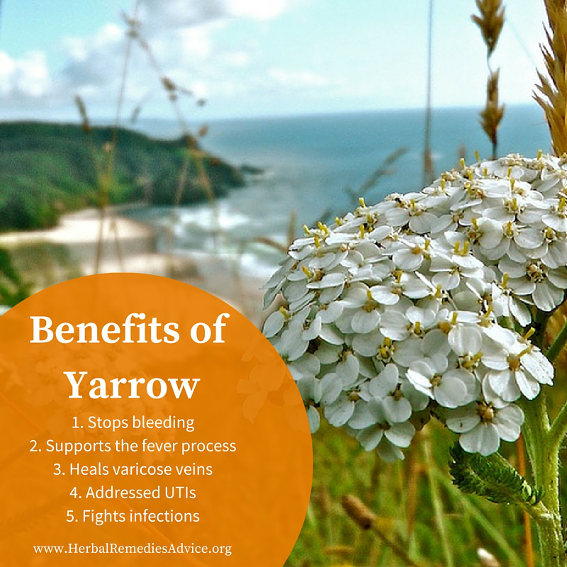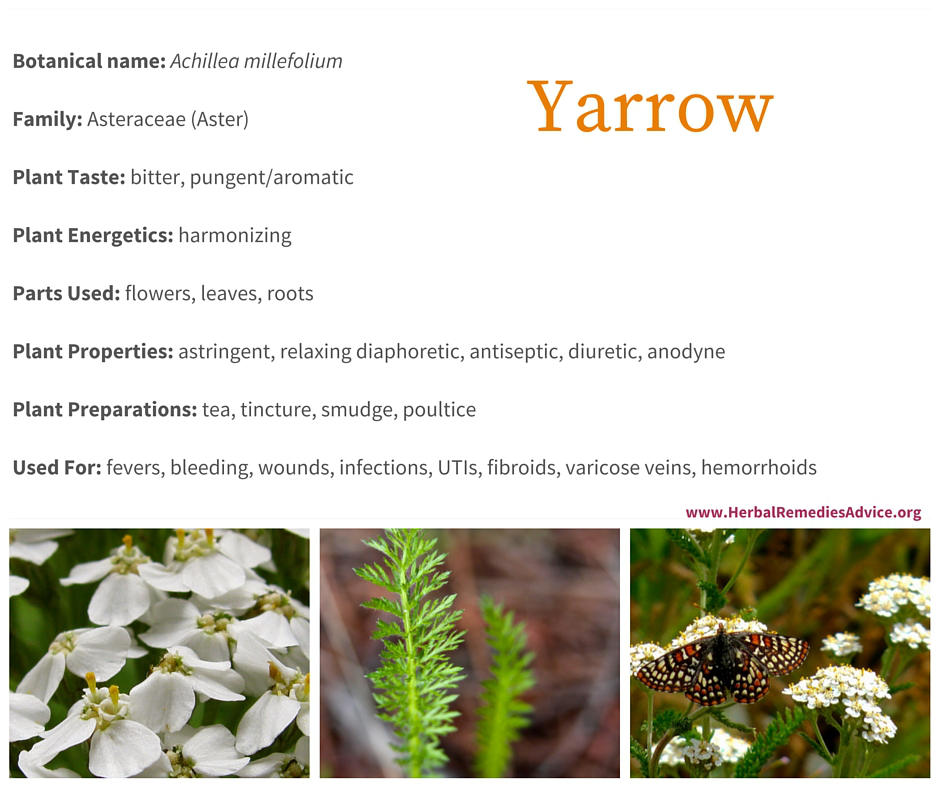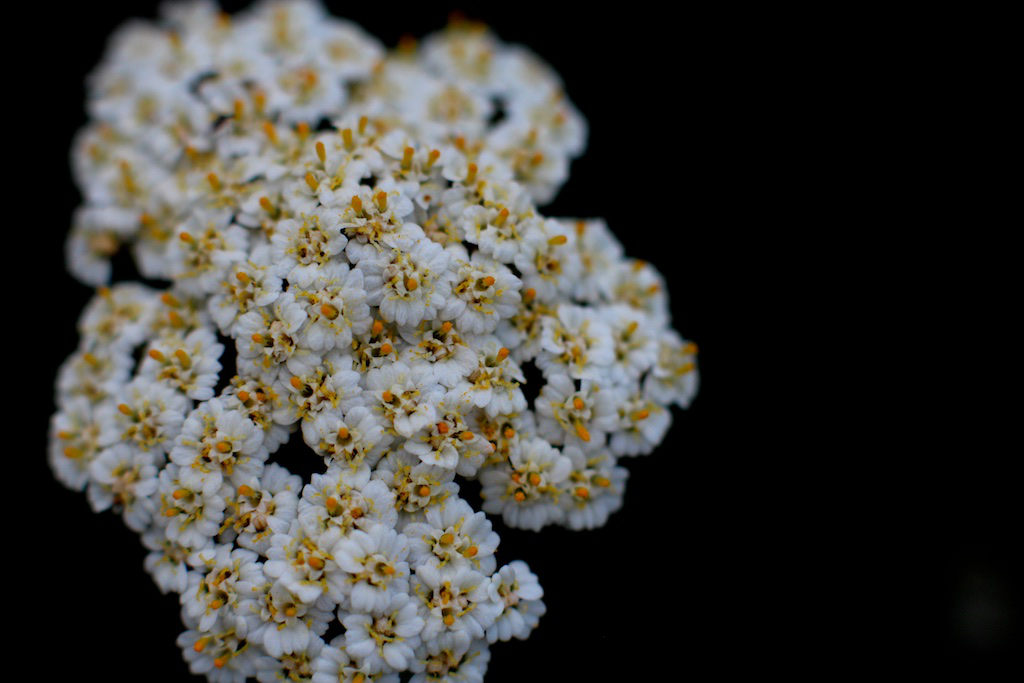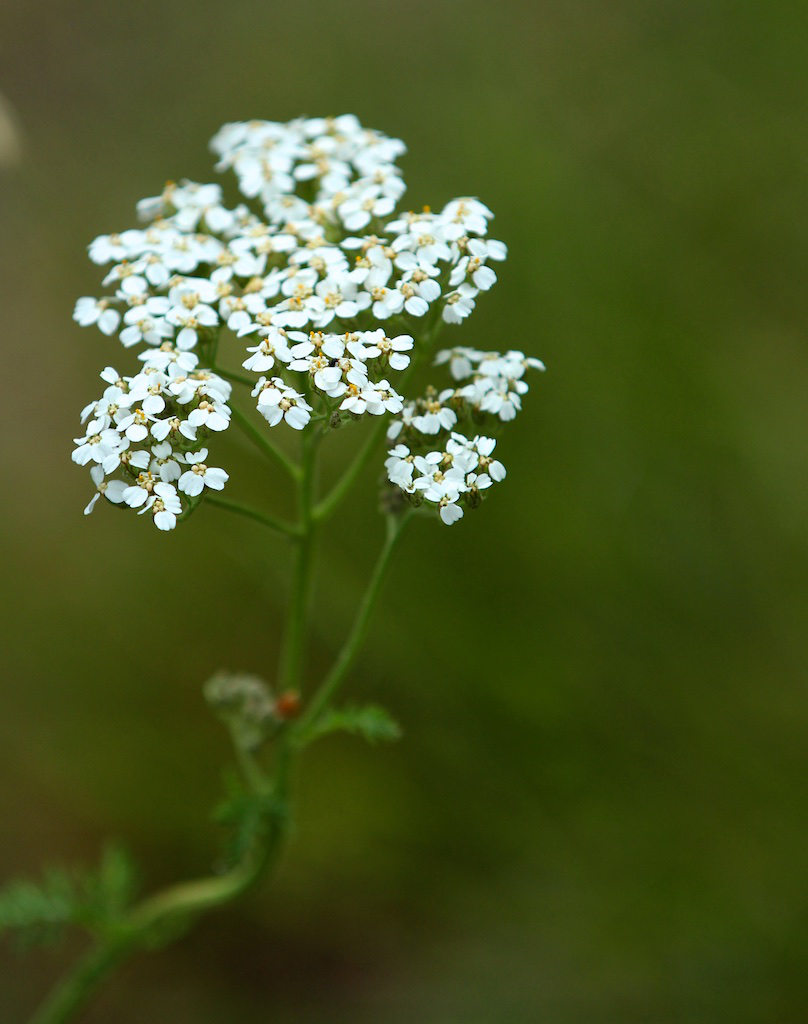Get weekly tips, recipes, and my Herbal Jumpstart e-course! Sign up for free today.
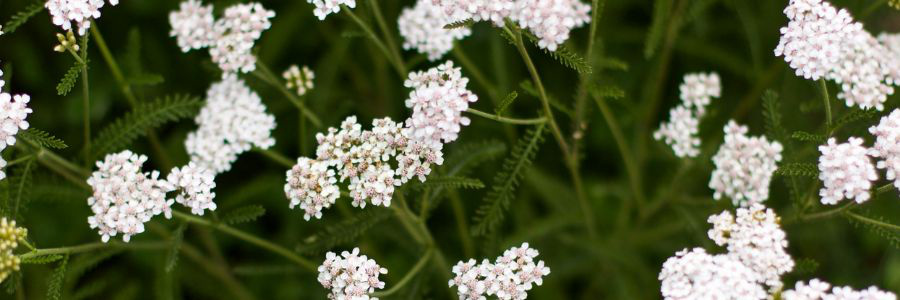
Yarrow Plant
Share this! |
|
There must be a thousand health benefits of the yarrow plant (Achillea millefolium). This herb continually surprises me with all that it can do! In this episode, I’m excited to share lots about yarrow, including favorite present-day uses, current medical research, and even traditional historical uses.
I’m also sharing a recipe for yarrow tea with you. People have been relying on yarrow tea for colds and flu for hundreds of years. That’s because it works so well! It’s effective for relieving general discomfort, but gentle enough for most people and even children.
It’s best to have safe and effective remedies ready before you actually need them, so this recipe for yarrow tea is a great one to have on hand even if it’s not currently cold and flu season where you live.
After watching this video, you’ll know:
► Why yarrow’s energetics make it supportive for so many different conditions
► The basics of how to work with yarrow for a variety of common health concerns
► How to check that the yarrow you’re harvesting has strong medicinal qualities
-- TIMESTAMPS --
- 00:00 - Introduction to yarrow (Achillea millefolium)
- 02:45 - Yarrow plant energetics
- 04:19 - Yarrow for healing wounds and for skin health
- 07:17 - Yarrow for harmonizing the blood
- 07:59 - Yarrow for cold & influenza symptoms
- 09:41 - Yarrow for the urinary system
- 10:37 - Yarrow for digestion
- 11:30 - Yarrow for uterus health
- 12:07 - Yarrow for oral health
- 12:38 - Yarrow for multiple sclerosis
- 13:43 - Yarrow for cancer patients
- 15:44 - How to identify the yarrow plant (Achillea millefolium)
- 17:05 - Are all yarrow species used the same?
- 18:33 - Special considerations for yarrow
- 19:26 - How to make a yarrow tea for colds and the flu
- 22:29 - Yarrow Fun Fact
Download Your Recipe Card!
l
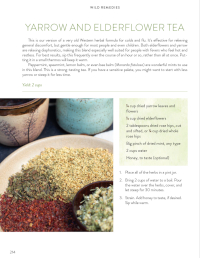
Transcript of the Yarrow Plant Video
The yarrow plant grows commonly all over the world and has been used as medicine by humans for tens of thousands of years. We even know for sure that Neanderthals were using yarrow as long as 50,000 years ago.1
Yarrow is boldly aromatic and makes a powerful harmonizing medicine for a wide range of issues, including acute injuries as well as chronic health challenges. Many herbalists, including myself, consider yarrow to be a panacea herb, meaning an herb that can address many different conditions.
Yarrow is a popular plant too! Do you have experience with the yarrow plant? I’d love to hear about it in the comments below. Your comments mean a lot to me! I love cultivating a community of kind-hearted plant-loving folks! Plus, it’s always interesting and insightful to hear the experiences of plant lovers out there. Your suggestion may also help others!
Okay, let’s dive in..
The Yarrow Plant's Energetics
Yarrow has some really interesting plant energetics.
But I should back up just a bit…Herbal energetics refers to a plant’s qualities in regards to its ability to cool, warm, dry, or moisten.
Herbal energetics is the foundation of many systems of herbalism, including Traditional Chinese medicine, Ayurveda, western herbalism, and many more.
If you’ve ever recognized that a cucumber is moist and cooling or that a cayenne pepper is hot then you’ve experienced herbal energetics.
I bring up cucumbers and peppers because they are fairly obvious in their herbal energetics. Many plants are! But yarrow is a different story.
Yarrow can be both cooling and warming. It can also stop blood flow and promote blood flow.
Okay, some of you are probably thinking I’ve lost touch with reality to even suggest such a thing is possible, but I haven’t. That’s how cool and utterly unclassifiable the yarrow plant is!
Above all, the yarrow plant is harmonizing. It brings balance to many situations.
Let’s look at some practical ways the health benefits of the yarrow plant can be used.
And by the way, if you’d like to have this extensive information in your hands, including instructions for growing and harvesting yarrow, then my second book, Wild Remedies, includes an entire chapter all about yarrow.
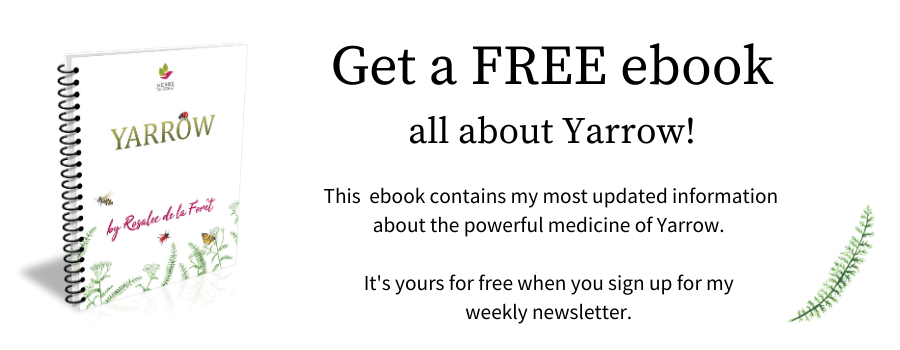
The Yarrow Plant for Healing Wounds and for Skin Health
For thousands of years yarrow has been used to heal wounds and stop bleeding. It has been called by many names over the centuries, including the descriptives spearwort, staunchweed, and woundwort. With this single plant in hand, it’s like having an entire medicine chest for healing injuries.
Here’s the many ways it works.
The yarrow plant is a styptic herb, which means it helps to stop bleeding.
When used as a topical poultice, both fresh and dried, yarrow can encourage blood to coagulate, helping to stop bleeding. This is a helpful tip for hikers who may be far from medical care. I’ve seen it work in some dramatic situations. Using yarrow to stop bleeding can be as simple as macerating the leaves and applying them to the area. It’s famous for stopping nosebleeds.
You can also use the powdered yarrow plant to stop bleeding.
If you haven’t already listened in, check out the interview I did with Guido Mase about how to make this yourself.
He also shares how to use dried yarrow stalks for the I Ching, the ancient Chinese divination text.
Another health benefit of the yarrow plant for wounds is as an antimicrobial to help keep them clear of infection. It can also be used to address signs of infection such as heat, redness, or yellow discharge.
Yarrow was famously used on Roman battlefields, and many since, and has long been thought of as a soldier’s herb.
In the 1st Century, Dioscorides recommended to “pound the leaves and put them on a fresh wound to close and heal the wound, clear it from heat and inflammation and congeal the blood.”2
In more modern days, herbalist 7Song has used yarrow extensively for first aid, including as a hot tea soak for wounds as well as for animal bites and scratches that are prone to infection.
Recent studies have further confirmed yarrow’s gifts for healing wounds. One study showed that oil infused with yarrow was effective in reducing inflammation on the skin.3
Another study demonstrated that yarrow, in combination with St. John's Wort (Hypericum perforatum), increased the healing of episiotomy wounds.4
In addition to healing wounds, yarrow also has broad benefits for skin health. As a diaphoretic herb, it brings circulation to the skin to induce sweating, which can relieve stagnation and promote skin health.
A 2021 review of yarrow determined that yarrow has potential for skin health due to several qualities, including being skin calming, anti-inflammatory, skin rejuvenating, antimicrobial, and antioxidant.5
The Yarrow Plant for Harmonizing the Blood
Remember how I said yarrow is harmonizing? Here’s a great example of that. While yarrow is famous for stopping external bleeding, it is also commonly used internally to move stagnant blood such as bruises, varicose veins, blood blisters, hemorrhoids, and even fibroids.
“As a blood regulator, it helps clot when things need to be clotted,
improves circulation and blood flow when needed, and also strengthens
the lining of blood vessels and capillaries.”
- Maria Noel Groves, Body into Balance
The Yarrow Plant for Cold and Influenza Symptoms
The health benefits of the yarrow plant also includes relieving many symptoms of a cold or the flu.
Here’s 4 ways you can work with yarrow:
- As a gargle or throat spray to soothe a sore throat.
- As a warm cup of tea to support the fever process. (my favorite recipe is coming up soon)
- The yarrow plant can also be used for coughs. Eclectic herbalist Finley Ellingwood recommended a syrup of the leaves for a chronic cough accompanied by bloody sputum.6 Herbalist Jeremy Ross combines yarrow with Angelica (Angelica archangelica) for cold damp phlegm in the lungs and with Pleurisy root (Asclepius tuberosa) for fevers and bronchial phlegm.7
- A 2019 study showed that an herbal formula that included yarrow was a safe and effective complementary product for treatment of acute non-bacterial tonsillitis in children aged 6-18 years.8
I know that the coronavirus is on a lot of our minds these days. A 2022 preliminary study looked at yarrow to see if it had potential benefit against the coronavirus. The researchers felt that the antiviral and anti-inflammatory properties of yarrow was significant enough to call for further research.9 I look forward to seeing how that develops.
So far we’ve covered working with yarrow for many types of wounds and injuries and for colds and flus but we’re just getting started!
The Yarrow Plant for the Urinary System
The yarrow plant is one of my favorite herbs for addressing urinary tract infections. I often recommend it combined with uva ursi (Arctostaphylos uva-ursi) and a demulcent such as marshmallow root (Althaea officinalis). It’s a urinary astringent and antiseptic, helping to dispel the infection while toning the tissues. And, when taken lukewarm or cool, it acts as a diuretic, promoting healthy urination while tonifying tissues.
Eclectic herbalists used yarrow for a variety of urinary complaints, including irritation of the kidneys and urethra, suppression of urine, and “chronic diseases of the urinary apparatus.”10,11,12
One study has shown there are possible benefits of using yarrow for people with kidney disease.13
The Yarrow Plant for Digestion
Yarrow’s ability to stop bleeding, heal wounds, abate infections, and address many symptoms of colds or flu often get highlighted, but there’s a lot more to yarrow.
The bitter aromatic qualities of yarrow can be used to support healthy digestion. It can be added to bitter blends or taken as a tea. One preliminary study showed some benefits of using an herbal blend including yarrow, ginger and Boswellia in patients diagnosed with irritable bowel syndrome (IBS).14 Eclectic herbalists used yarrow for people with dysentery.15
An in vitro study in 2021 showed that the yarrow plant has benefits as a PREbiotic in the digestive system. The researchers concluded that this could be helpful for people with digestive fungal imbalance.16
The Yarrow Plant for Uterus Health
Yarrow’s gifts of harmonizing the blood make it useful for a wide range of uterine health issues. Eclectic herbalists used it for both urinary hemorrhage and leucorrhea.17 Dr. Aviva Romm recommends it as a topical treatment for varicosities related to pregnancy.18
One double-blind clinical trial found that yarrow was effective at relieving pain associated with menstrual cramps.19
A 2021 study showed that yarrow can help breastfeeding parents who have nipple fissures.20
The Yarrow Plant for Oral Health
Yarrow is great for oral tissues. It’s astringent, meaning it tightens tissues like gums. It’s an anodyne, meaning it can relieve pain, and, as already shared, it has antimicrobial properties.
One study showed that a distillate of yarrow healed the symptoms of oral mucositis in chemotherapy patients faster than simply using the routine solution.21
Yarrow for Multiple Sclerosis
In researching this episode I came across an interesting 2019 clinical trial looking at the effect yarrow has on people who have multiple sclerosis or MS.
This triple-blind randomized placebo-controlled parallel group trial (that’s a mouthfull) involved 75 people with MS. They were split into three groups. One group received a placebo. One group received 250 mg/day of yarrow and another group received 500 mg a day of yarrow.
The study showed that, after one year, patients taking either dose of yarrow had a significant decrease in the relapse rate as compared to those taking the placebo. Those taking 500 mg did slightly better than those taking the lower dose.22
I don’t know of this being put into significant clinical practice yet but I’m excited to see how this develops.
Yarrow for Cancer Patients
There’s been some interesting preliminary research regarding yarrow and cancer.
For example, there are in-vitro studies showing that yarrow inhibits growth of human tumor cell lines by interfering with cell cycle and inducing apoptosis. Further positive effects have been seen against melanoma, prostate, uterine, and cervical cancer cell lines.23 Remember, this is preliminary in-vitro research, so no claims are being made about yarrow curing cancers, but it will be interesting to see how this line of research continues.
As mentioned, a human clinical trial showed that gargling a distillate of yarrow healed oral mucositis in chemotherapy patients more quickly than the routine solution.
And here’s an interesting study for you. Published in January of 2022, this study evaluated how yarrow could help patients with metastatic cancer deal with cancer-related fatigue.
People were split into two groups, one receiving yarrow treatment and the other not receiving treatment. Those getting the yarrow treatment saw increased sympathetic activity during the day, which could help with fatigue. 24
The interesting thing about this trial was how they worked with the yarrow. They used it as an external poultice over the liver, which is a traditional use.
As you’ve seen, yarrow heals wounds, harmonizes the blood, rejuvenates the skin, relieves cold and flu symptoms, promotes digestion, and has shown to benefit people with cancer and multiple sclerosis…seriously, what can’t this plant do?!
In the following sections I’ll share tips for identifying yarrow, how to know whether or not you can use different colored yarrows, some cautions for working with yarrow, and share my favorite yarrow tea for colds and the flu.
Botanically Speaking: The Yarrow Herb
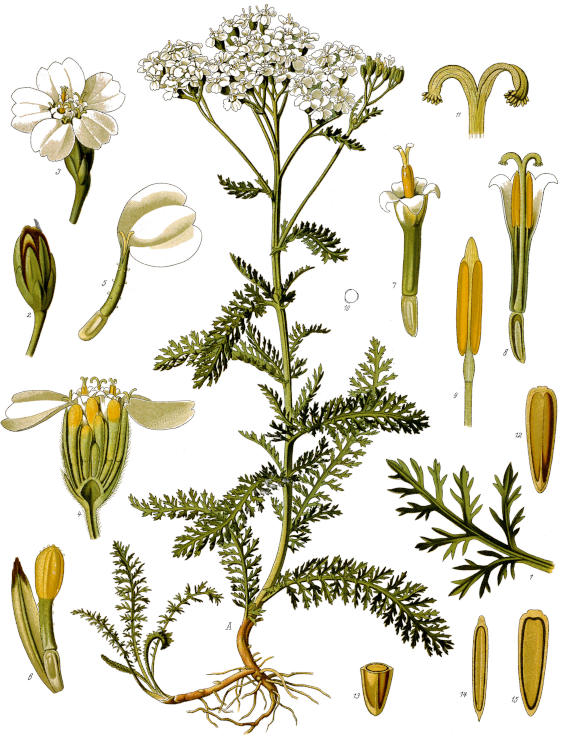
Yarrow is in the Asteraceae or daisy plant family.
The genus Achillea may refer to the Greek war hero Achilles or his soldiers using yarrow for their wounds.
The Kew Botanic Gardens of London recognizes over 150 different species of plants in the Achillea genus. Achillea millefolium is the species most often used by herbalists.
The species name millefolium means a thousand leaves, referring to the finely divided, feather-like leaves of yarrow. In the spring, they emerge from the ground. They also grow along the flower stem. The plant often spreads by its rhizomatous roots.
Yarrow loves to grow in sunny fields and meadows, although it can tolerate some shade as well. It commonly grows all over the globe. It reaches one to three feet in height and is a perennial herbaceous herb, meaning it dies back each year but emerges again in the spring from the roots.
The flowers grow as a compound corymb and are most often white, but can have some pinkish hue. Yarrow has both the ray and disk flowers characteristic of the Asteraceae.
I’m often asked if yarrows with different colors of flowers can be similarly used. My best advice is to follow your senses. I recently had a group of herbal students over for an afternoon plant walk. I had them smell and taste both the wild yarrow growing in a dry field and the pink cultivated yarrow I had bought from a nursery. The consensus was the pink cultivated yarrow smelled sweeter and softer, while the wild yarrow had a stronger more aromatic scent. The difference was very noticeable. Like all plants, yarrow’s strength and aromatics change wherever it grows and becomes stronger under difficult growing conditions. That’s why using our senses to get to know plants is so important!
I recommend getting familiar with the wild yarrow plant with white flowers and then branching out into other yarrows once you have a good feel for how this medicine tastes, acts, and feels. In that way you can compare it to other yarrows and draw your own conclusions.
If you want some help getting started with knowing plants through your senses, then check out my free herbal jumpstart course.
This is a practical short course that will grow your herbal knowledge 10 fold.
Special Considerations for the Yarrow Plant
With its head of white flowers, the yarrow plant has a passing resemblance to some poisonous plants like poison hemlock and water hemlock.
Poison hemlock and water hemlock are both members of the umbelliferae or carrot family and their flowers are compound umbels, not a corymb, like yarrow.
As always, you want to be 100% certain that you are identifying and harvesting the correct plant.
Knowing the difference between a corymb and umbel is essential.
Two other cautions for yarrow are that:
- Yarrow has not been shown to be safe during pregnancy.
- And those who are sensitive to plants in the Asteraceae will want to use caution when first starting to work with yarrow.
How to Make a Yarrow Tea for Colds and the Flu
People have been relying on yarrow tea for colds and the flu for hundreds of years. That’s because it works so well! For many, this is the cup of tea they automatically reach for when they feel like they are coming down with something.
This particular recipe comes straight from my second book, Wild Remedies: How to Forage Healing Foods and Craft Your Own Herbal Medicine, which I co-authored with Emily Han. This book is perfect for you if you want to learn more about the plants growing near you. Included with each herbal chapter is safety information, sustainable harvest instructions and lots of fun and easy recipes like this one.
Here’s what you’ll need to make the tea.
- 1⁄4 cup dried yarrow leaves and flowers
- 1⁄4 cup dried elderflowers
- 2 tablespoons dried rose hips, cut and sifted, or 1⁄4 cup dried whole rose hips
- Large pinch of dried mint
- 2 cups water
- Honey, to taste (optional)
Here’s how to make the tea
1. Place all of the herbs in a pint jar.
2. Bring 2 cups of water to a boil. Pour the water over the herbs, stir, cover, and let steep for 30 minutes.
3. Strain. Add honey to taste, if desired.
Sip while warm.
This recipe is our version of a very old Western herbal formula for colds and the flu. It’s effective for relieving general discomfort, but gentle enough for most people and even children. Both elderflowers and yarrow are relaxing diaphoretics, making this blend especially well suited for people with fevers who feel hot and restless. For best results, sip this frequently over the course of an hour or so, rather than all at once. Putting it in a small thermos will keep it warm.
Peppermint, spearmint, lemon balm, or even bee balm (Monarda fistulosa) are wonderful mints to use in this blend. This is a strong-tasting tea. If you have a sensitive palate, you might want to start with less yarrow or steep it for less time. In that way it will be less bitter. But, if you can tolerate the bitterness then I highly recommend it at full strength.
Yarrow Fun Fact
Yarrow grows as a native plant all over the world and it attracts many beneficial pollinators, from hover flies to butterflies to beetles. But, when applied topically to your skin, the aromatics of yarrow can be used as a mosquito repellent! That’s just one other way that yarrow is wonderfully harmonizing.
If you enjoyed this video on the health benefits of the yarrow plant and you value trusted herbal information, then I hope you’ll stick around! The best way to get started is to subscribe to my newsletter at the bottom of this page so you can be the first to get my best herbal insights and recipes.
Citations for Yarrow Plant
Click to show/hide.
Rosalee is an herbalist and author of the bestselling book Alchemy of Herbs: Transform Everyday Ingredients Into Foods & Remedies That Healand co-author of the bestselling book Wild Remedies: How to Forage Healing Foods and Craft Your Own Herbal Medicine. She's a registered herbalist with the American Herbalist Guild and has taught thousands of students through her online courses. Read about how Rosalee went from having a terminal illness to being a bestselling author in her full story here.
